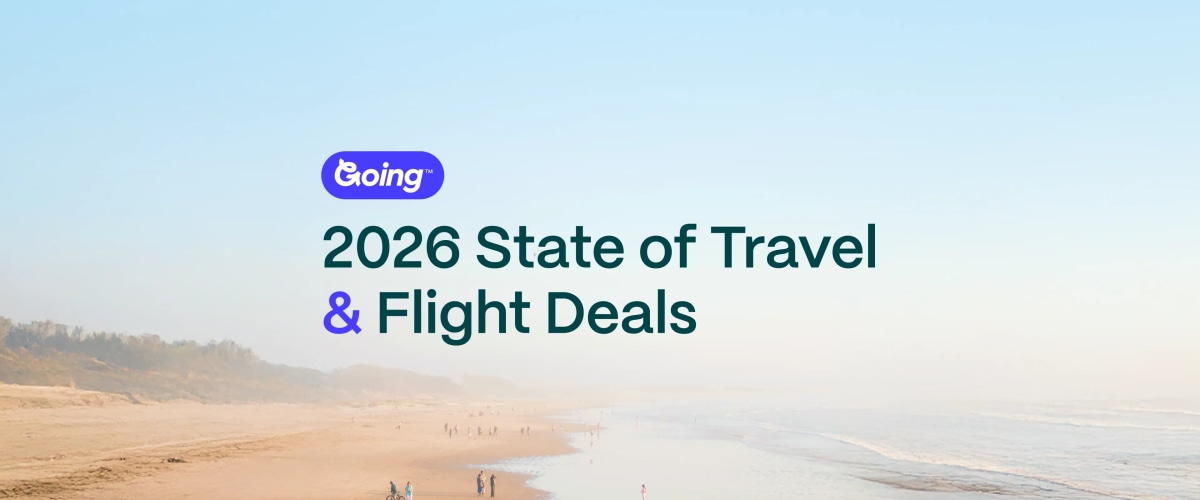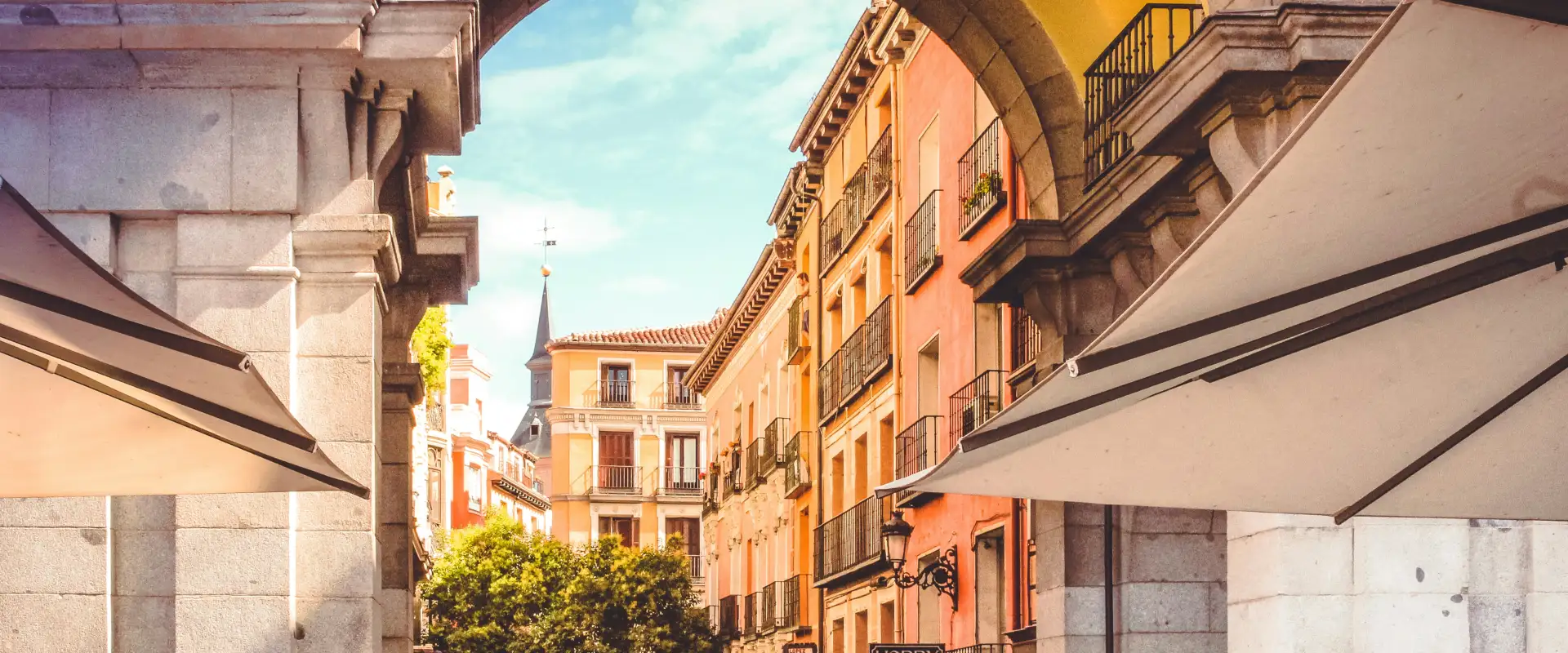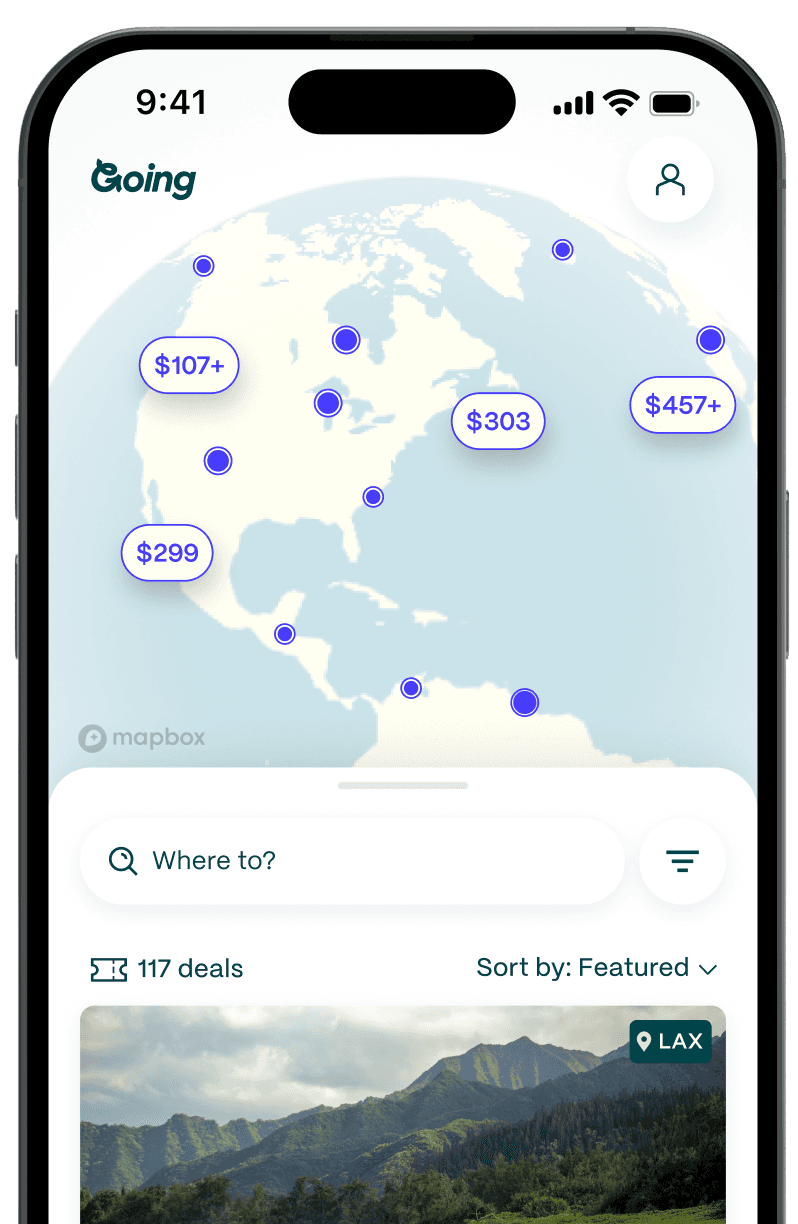
Corsica: The Proud Mediterranean Isle Divided in Two
Corsica belongs to France and is situated 135 miles off its coast, yet the island is distinctly different from anywhere else on Mainland France. With 620 miles of coastline, Corsica is the fourth-largest island in the Mediterranean, challenging first-time visitors to decide which part to explore first: the quiet, rugged North, home to vast expanses of forests and hilltop views, or the South, popular among tourists for its unmatched beaches and history lessons.
Bear in mind that Corsica is no quick trip; it’s not an island that you can do in a day. You’re better off renting a car—or for the more adventurous, a motorcycle—and sticking around for a while. After some time exploring the island’s narrow, winding roads, perched mountain villages, dense forests, dramatic mountain peaks, hiking trails, and some 200 beaches, it’ll be clear why Corsica is called Ile de Beauté—the island of beauty.
Capture the flag

Corsica has had a turbulent past—understandably, given its strategic position in the Mediterranean. Megaliths (large stone monuments) in different parts of the island, such as Filitosa north of Ajaccio, are evidence of the island’s first-known prehistoric occupants. Constantly invaded and often occupied throughout the Middle Ages, the little island dealt with many attacks, from the likes of the Greeks, Romans, and North Africans of Arab descent. Corsica’s longest stint was under Genoese rule, which lasted approximately five centuries and is visible in the famous Genoese towers built to ward off enemies that still stand today.
Pasquale Paoli, however, changed the course of Corsican history. As the proclaimed general of the Corsican nation, he obtained independence from Genoa for the island in 1755. Although independence only lasted about 14 years, he came to be known by Corsicans as "Babbu di a Patria”—father of the nation. In 1768, after a year of fighting, Corsica was ceded by the Republic of Genoa to France via the Treaty of Versailles.

Corsica's storied history remains in the design of its flag, which portrays a Moor's Head—a man wearing a white bandana. The symbol is a reference to pre-Genoese rule, when the Pope awarded Corsica to Aragon; the symbol was lost when the Republic of Genoa presided over the island, returned when Paoli gained its independence, and remains to this day.
An island divided

In the 1970s, the French government divided Corsica into two administrative departments in an effort to “help diffuse growing independence agitation on the Mediterranean island.” Haute-Corse, the North, would hold the capital of Bastia, and Corse-du-Sud in the South would hold its own capital of Ajaccio.
In northern Haute-Corse, you’ll find Cap Corse, a peninsula that looks a bit like a finger pointing upwards. A quaint, picturesque haven for those seeking a peaceful holiday, its coastline is lined with typical fishing ports, beaches, and bays. Haute-Corse’s capital and the island's second-largest city, Bastia, is fairly commercialized, features an old town with a citadel, and is best used as a base for exploring the rugged North.
Southern Corse-du-Sud, on the other hand, is chic—albeit pricier than the North—and visitors are spoiled for choice when it comes to hotels, restaurants, and beaches. Ajaccio, the largest city in Corsica, gets busy and noisy, especially on days when cruise ships are docked. From the sea, the bay and imposing citadel are impressive, while on land, the narrow streets in the old town and marketplaces brim with fresh Corsican products, such as cheeses, sausages, honey, figs, and olive oil. Just be aware that, unlike to the North, there are no trains going south to towns such as Bonifacio, so unless you’re open to taking the bus, it’s wise to have your own transport.
Wine about it

Most of the vines in Corsica were initially brought over from Italy. Over the years, French vignerons have vastly improved the standard of Corsican wine. The island has both great soil and a top-tier climate with little rain, ample sunlight, and a gentle sea breeze. The soils of the North are mostly limestone and clay, while the South is predominantly granite and volcanic. Experts say it’s this mix that gives Corsican wine its character.
Granted, Corsica has had a poor wine-production reputation in the past, with little export and the vast majority of wines being consumed directly on the island. But the industry has developed quickly over the past several years. The primary wine-growing regions in Corsica are Cap Corse in North Corsica, the area around Ajaccio, and Sartene in South Corsica.
While Corsica is a leading producer of rosés, its traditional grape varieties include Sciaccarello (primarily grown only on Corsica) and Nielluccio for reds, which wine connoisseurs say reflects their Italian heritage. Whites produced on the island include Vermentino, originally brought from Greece, and Muscat à Petit Grains from the South of France.
Cheese and chestnuts

Corsicans have been making cheese for centuries. Cheese here is made exclusively from the milk of goats or sheep; some producers have even earned the prestigious AOP (Appellation d’Origine Protegée) label—Protected Designation of Origin (PDO) in English—indicating their cheeses have met the highest standards of origin, process, and quality.
Farmers couldn’t ask for better cheese-making conditions in Corsica; herds are nourished exclusively on pastures with cool, high altitudes and mountainous terrain. The specialty cheese is brocciu, a mild ricotta-type creamy cheese that’s added to many Corsican recipes, such as pastas, doughnuts, and flans. Because brocciu is creamy, Corsicans are also known to have it with a bit of honey or jam at the end of a meal. Another cheese, tomme de brebis, is made from sheep’s milk; local producers allow three months for this hard, tangy cheese to mature.
Chestnuts, called châtaigne in French, also have a special place in Corsica. Originally introduced when the Genoese arrived on the island, chestnuts grow on orchards in the hilly Castagniccia region of northeast Corsica and are now picked, dried, and ground to create chestnut flour, which gives breads and pastries a distinct nutty, sweet flavor.
One island favorite is pulenda, a type of Corsican bread usually served with eggs and cheese. Also popular, especially among first-time visitors to Corsica, are canistrelli (sweet, dry biscuits). A pleasant surprise is Pietra, a caramel-flavored Corsican beer made with chestnut flour in the Pietraserena commune of North Corsica.
To the extremes

Corsica has a mountainous landscape with a Mediterranean climate ideal for time spent outdoors. If you’re looking for a long-distance hike, the GR20 is an option. Considered one of the toughest hikes in Europe, it’s 112 miles long and traverses the island’s mountainous spine. (Despite its length, the trail is said to be relatively accessible if you have hiking experience, as it’s well-marked and has regular accommodation options and resupply spots.)
If the GR20 seems a bit arduous, there are also many family-friendly hikes throughout the island that will take you from mountain to sea, mountain to mountain, or along beaches with a healthy dose of culture mixed in. In Corte—the resident university town and former capital of independent Corsica—you can hike around one of its many lakes for half a day before taking a dip, enjoying an outdoor lunch, and exploring the nearby citadel and Musée de la Corse.
In northern Corsica, you’ll also find the arid, barren Agriates Desert. A conservation area, the desert features footpaths, nearly 25 miles of coastline, and plenty of panoramas with the sea on one side and mountains on the other. And at the extreme north end of the island, the 25-mile-long Cap Corse peninsula is another favorite; it’s covered in vegetation, tiny villages, and more mountainous landscapes with sweeping sea views. Cap Corse’s coastal path along its beaches is relatively easy, offering frequent stops to admire the many Genoese towers.
Just remember: If you plan to hike in Corsica, avoid the summer months and know your limits.
Corsica’s other hero

Napoleon Bonaparte—who rose to power following the French Revolution and expanded his empire through much of Europe in the early 19th century—was born in Corsica in 1769. While the ruler is remembered in France for instating the Napoleonic Code and other reforms, his legacy is not unmarred, as his military campaigns were known to be quite tyrannical.
The Bonaparte family home, which also happened to be Napoleon’s birthplace, was in Ajaccio.
Now a museum known as Maison Napoleon, it features furniture, photos, and décor that echo the family life of the young Corsican. There’s also a small garden and, near the home, a cave he often retreated to that is known as Napoleon’s Corsican Grotto. It’s marked with a grand staircase and leads to an imposing statue of the emperor.
On August 15, Ajaccio celebrates Napoleon’s birthday as a public holiday with mass at the Cathedral, concerts, processions, and fireworks.
Fine and sandy

Much of life in Corsica revolves around water: rivers, lakes, seas, and beaches. There are more than 620 miles of coastline, comprising some 200 beaches. Beaches in the North tend to be more remote with few amenities, while beaches in the South are often larger and outfitted with lifeguards and nearby bars and restaurants.
Take the ferry or hop on a boat tour to the Lavezzi Islands, located about six miles south of Bonifacio; the small archipelago is known for its crystal-clear water, great snorkeling, and picnic spots. Note that there is little shade here, so go prepared.
For a slightly different experience, head to Nonza Beach about halfway up Cap Corse; it’s fairly sandy, but the approximately mile-long beach is largely covered in dark black pebbles. In Corsica, don't be surprised if you come across a cow while sunbathing—it's a fairly common sight, especially north of Ajaccio.
One of the most wonderful ways to view the island, like the limestone cliffs of Bonifacio, is from the sea by boat or mini cruise. For a more adventurous approach, get involved in a water sport activity, like sailing, windsurfing, snorkeling, or diving, all prominent on the island.
Do as the Corsicans do

Corsica lies southeast of mainland France, but it’s actually much closer to Italian territory; the Italian island Sardinia is less than seven miles south, across the Strait of Bonifacio. Its proximity to both France and Italy—as well as the fact that it's been ruled by both countries throughout history—means that Corsica is an interesting mix of both, evident not just in the words that show up on street signs but also in the smattering of languages spoken (of which Corsican, closely related to the Italian dialect spoken in Tuscany, is one). The result: an island with language, traditions, cuisine, and wine that are distinctly Corsican.
Perhaps because of their turbulent history, Corsicans of older generations tend to keep a firm grasp on the past and their culture. The culture is slowly changing, though. As mainland France continues to influence the island and more vacationers flock to Corsica each year, fiercely independent Corsicans have had to accept that the island relies on tourism from “le Continent”—how Corsicans refer to mainland France.
One of the best things you can do when visiting is to respect the local culture and partake in Corsican heritage. For instance, don’t be in a hurry when you eat out—Corsicans are even more relaxed than the French. And be bold when ordering at restaurants: Try typical Corsican dishes like civet de sanglier, a slow-cooked wild boar stew and a signature dish of Corsica.
Also, partake in local festivities, such as Bastille Day on July 14, Fête de la Musique to celebrate Corsican music in mid-June, and the jazz festival in Ajaccio at the end of each June. As Corsica is predominantly Catholic, there are also a number of religious festivals held all around the island throughout the year, and visitors are always welcome.
Good to know
Is Corsica expensive?
South Corsica is more expensive than the North. A three-star hotel in Ajaccio will be around €180. Gites, typical holiday homes in France, are less expensive, though you may need to shop around. A three-course set lunch menu will cost €45–€50 in most places; choosing individual dishes from the menu is more expensive. You can expect to have a nice time in Corsica for around €200 per person per day.
Best time to visit Corsica
Corsica is best explored in April, May, and September. In October, when the tourists have gone and the temperatures are still great, Bonifacio is pure joy. The temperature boils in the summer, and the French are on holiday in August, so avoid going then to miss the crowds. Between January and March, it can be chilly with some rain.
What languages are spoken in Corsica?
The main language spoken in Corsica is French. Although you can communicate in English at the tourist offices and hotels in the main cities like Ajaccio, Bonifacio, and Bastia, you will have to speak French in most parts of rural Corsica. Young people in Corte and Ajaccio tend to speak English.
Corsica with kids
Loads of activities exist in Corsica for the entire family. Besides the usual beach activities like swimming and snorkeling, lessons are available for windsurfing, kayaking, and other water sports. There are also numerous adventure parks throughout the island, including Ajaccio’s Vizzavona Adventure Course. Near Bonifacio, book a day trip to the neighboring Lavezzi Islands.
Corsica public transportation
Corsica has limited public transport options. There are bus lines, but they are few and not practical in the summer. You can travel by train from Ajaccio to Bastia and Corte, but no rail service exists to the South. To make the most of a trip, a rental car is recommended. Note that roads are windy in some areas.
Is Corsica safe?
France ranks #67 out of 163, according to Vision of Humanity’s Global Peace Index. Corsica is relatively safe. Practice normal precautions when traveling.
France also ranks #20 with a score of 75/100 for LGBTQ+ equality, according to Equaldex's LGBT Equality Index. Same-sex marriage is legal in France, including on the island of Corsica.
Getting to Corsica
- Main airports: AJA, BIA, FSC, CLY
- Average Going deal price for cheap flights to Ajaccio: $587 roundtrip
More destinations like Corsica
Last updated August 30, 2024









